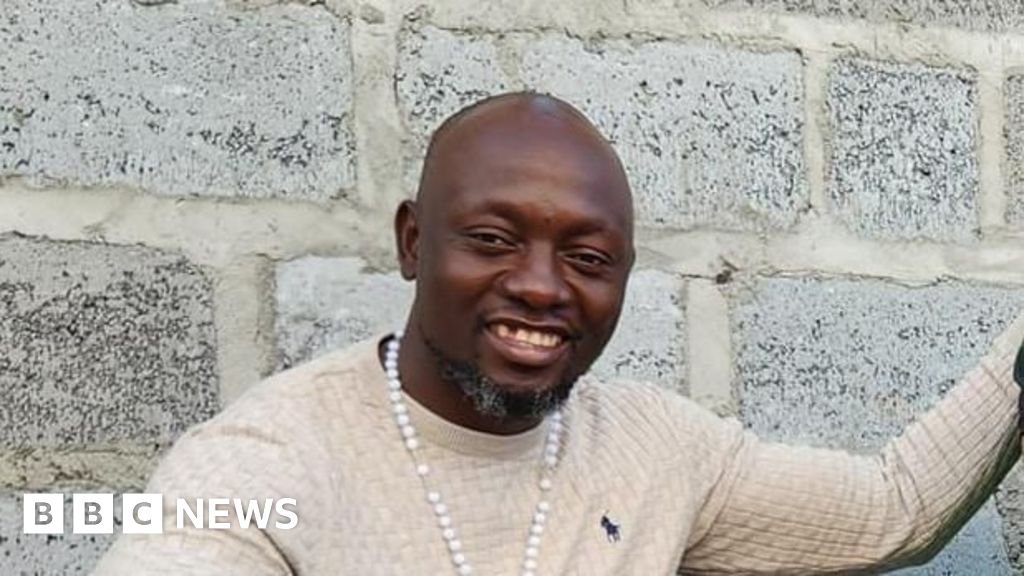
BAKU, Nov 20 (IPS) – Migration is growing as the planet gets even hotter. Climate change is fuelling a migration crisis and millions of people in vulnerable nations are continually being uprooted from their homes. The climate and migration nexus are undeniable and the global community has turned to the Baku climate talks for urgent and sustainable solutions.
Ugochi Daniels, the Deputy Director General for Operations at the International Organization for Migration (IOM) spoke to IPS about displacement of people due to the impact of climate change and its different dimensions, such as disaster displacement, labor mobility, as well as planned relocation. She also talked about the magnitude of this pressing problem, as nearly 26 million people were displaced due to the impact of climate change in the last year alone.
“This impact is destroying people’s livelihoods. The farms they used to farm are no longer viable and the land can no longer sustain their livestock. So, people then move, looking for job opportunities elsewhere. Then there is planned relocation, which IOM supports governments to do. When governments know certain communities can no longer adapt as the impact of climate is so great that they are going to have to move, rather than waiting for the climate impact to happen to move and probably not in as organized a way as possible, governments plan for it. That is what we refer to as planned relocation,” she explains.

Stressing that climate migration is on track to be an even bigger global crises, with World Bank estimates showing that “216 million people will be displaced due to the impact of climate by 2050 and that they will be displaced within their countries. Nearly a billion people are living in highly climate-vulnerable areas. Trends are showing that when people are displaced, it is often due to a mix of many factors. So, if a community is hit by an extreme weather event, and at the same time the necessary investments were not made, there is no way for the community to absorb the shock of the extreme weather event.”
Daniels notes that with progressive COPs, each year is also becoming the hottest in recorded history and there are more disasters such as heat waves, droughts, floods and hurricanes. Saying that these issues are increasingly becoming a lived reality for even more people. Further referencing the recent flooding in Spain, in addition to all the disasters unfolding in the developing countries. In turn, this is increasing awareness of the impact of climate change on people.
“Of the estimated 216 million people moving by 2050, nearly half of them are in Africa—86 million in sub-Saharan Africa and 19 million in North Africa. Africa is highly vulnerable amid all the other development issues that the continent is dealing with. And we know that, looking at Africa alone, water stress will affect 700 million people by 2030. The reality is that we are experiencing the impact of climate. We had unprecedented flooding in Nigeria this year and it is not just Nigeria—there is Chad and the Central African Republic and the Eastern Horn of Africa has faced similar events in recent times, and we have the El Niño and La Niña in Southern Africa,” she explains.
Daniels says they are encouraged and satisfied because human mobility is integrated into submissions for the Global Goal on Adaptation and that they are unified around this issue. There is also the Kampala Declaration on Migration, Environment and Climate Change, which has already been signed by over 40 countries in Africa and the regional groups in the Pacific Island States and the islands have all prioritized the issue as it is their lived reality.
“As IOM, our presence at COP is in supporting member states in raising visibility and awareness on the link between climate change and migration and displacement. Having said that, within the negotiations, and we are still waiting to see what comes out, we hope that this continues. We count on member states in making sure that the impact on vulnerable communities is recognized, that vulnerable communities are prioritized for climate financing, and that migration is factored in as a positive coping strategy for adaptation,” Daniels observes.
She emphasises that “when we talk about displacement, we also have to recognize that as things stand, migrants, through formal and informal means, remit a trillion dollars a year. And a lot of that is going to developing and middle-income countries. And when I met with the diaspora at COP last year, they said to me, ‘We are financing loss and damage now.’ We have seen that remittances have stayed resilient since COVID-19 and continue to go up. So here at COP, it is not just recognition of climate change and human mobility, which has been in the covered decision at least for the last three COPs. But it is also about integrating this into the different instruments and mechanisms, whether it is financing or in the indicators.”
Further speaking to the issue of the operationalization of the Loss and Damage Fund. Saying that whereas there are 64 funds globally specific on climate, the Loss and Damage Fund is the only one that has a window specific for vulnerable communities. As member states continue their negotiations, IOM is looking forward to solutions that, for instance, improve access to climate finance, ensuring that in the new financing path, the loss and damage fund supports vulnerable communities to adapt or migrate safely. Emphasising the need for regional cooperation to manage climate-related migration and how climate migration features in the national adaptation plans.
“Importantly, vulnerable communities. need to be part of the solutions. They need to be at the table where these decisions are being made. IOM is one of the—it is actually the only UN organization—that is one of the representative agencies supporting the Loss and Damage Fund and implementation of the fund. Our top priority is the engagement and participation of those most affected so that they have a voice at the table. Well-managed migration is a very effective adaptation strategy. Human civilization has been shaped by migration and this will continue. Climate and other factors will continue to trigger movement,” Daniels says.
“We have the tools. We know what the solutions are. There is the global compact on migration, which is how countries have agreed they will cooperate for better migration management and better migration governance. So, because we know migration has shaped our history and that it will shape our future, we have no excuse for not ensuring that it is safe, dignified, and regular. Whatever we do not do, the traffickers and smugglers will do.”
Stressing that in the process, there will be more people dying, “We will have increased vulnerabilities, and the business model and the industry of trafficking will just continue to grow. So, the urgency for climate action is here and now and there is really no excuse for why we are not collectively working on this. The evidence is there. The solutions are there. The agreements are there too. So, we are here at COP to do our best to ensure it happens.”
IPS UN Bureau Report
Follow @IPSNewsUNBureau
Follow IPS News UN Bureau on Instagram
© Inter Press Service (2024) — All Rights ReservedOriginal source: Inter Press Service



Leave a Comment